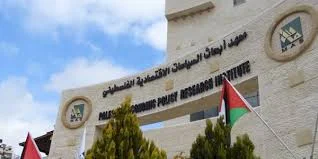
Mas Institute: Slight Growth in the Palestinian Economy Amid High Inflation and Rising Financial Challenges
SadaNews - The Palestinian Economic Policy Research Institute (MAS) issued the 82nd edition of its quarterly economic monitor, which covers the economic performance of key sectors in the Palestinian economy during the second quarter of 2025. MAS produces the monitor in collaboration with the Palestinian Monetary Authority, the Palestinian Central Bureau of Statistics, and the Palestinian Capital Market Authority. The economic monitor provides comprehensive and periodic coverage of the performance of various economic sectors, as well as important issues in social development and economic policies. It also covers major economic and social reports released by various international entities.
This edition of the economic monitor includes two main sections; the first section reviews economic developments during the second quarter of 2025, while the second section contains five boxes addressing the most prominent developments in the economic and local arena. Below are the key economic developments in the second quarter of 2025:
Gross Domestic Product (GDP): The quarterly data for the second quarter of 2025 showed some trends of improvement in economic performance compared to the historically low levels in the previous quarter. The GDP grew by 0.5% in constant prices during the second quarter of 2025 compared to the previous quarter, reaching approximately 2.8 billion dollars. Additionally, the GDP in the second quarter of 2025 grew by 4.7% compared to the corresponding quarter.
Employment and Unemployment: The unemployment rate in the West Bank decreased by about 1.6 percentage points between the second and first quarters of 2025, reaching 28.6%. The average daily wage for workers in the West Bank was approximately 134.8 shekels. The proportion of wage earners below the minimum wage in the private sector reached 16.5%.
Public Finance: The net public revenues and grants collected during the second quarter of 2025 were about 3.5 billion shekels, compared to about 2.4 billion in the corresponding quarter. On the other hand, public expenditures increased by 8% compared to the corresponding quarter to reach approximately 3.5 billion shekels (cash basis). Government arrears during this quarter amounted to about 4.6 billion shekels, and public debt, converted to dollars, rose by about 15.9% compared to the corresponding quarter to reach about 4.6 billion dollars.
Banking Sector: Credit facilities in the second quarter of 2025 rose by about 7.3% compared to the corresponding quarter, reaching approximately 12.7 billion dollars, of which a quarter was allocated to the public sector. Client deposits witnessed a noticeable increase during the second quarter of 2025 compared to the corresponding quarter, reaching nearly 21 billion dollars. The banks’ profits in this quarter amounted to 100.5 million dollars, compared to 53.5 million dollars in the corresponding quarter of the previous year.
Palestine Stock Exchange: The market capitalization of listed companies on the Palestine Stock Exchange reached 4.7 billion dollars at the end of the second quarter of 2025, up by 15.4% compared to the previous quarter. The Al-Quds Index closed at 586.73 points, an increase of 18.3% compared to the previous quarter.
Inflation and Prices: The Palestinian economy experienced an inflation rate of 45.3% in the second quarter of 2025 compared to the corresponding quarter, leading to a decrease in purchasing power between the two quarters for those receiving and spending their income in shekels. Those receiving their income in dollars and dinars and spending all their expenses in shekels also saw a decrease in purchasing power by about 49.1% compared to the corresponding quarter, due to the decrease in the exchange rate of the dollar against the shekel and rising inflation rates.

Mas Institute: Slight Growth in the Palestinian Economy Amid High Inflation and Rising Fin...

Palestine Announces Ban on "Roblox" Platform to Protect Children Digitally

Currency Exchange Rates Against the Shekel on Monday (November 17)

Will a New Bank Open in Palestine Soon?

Salam Marai to SadaNews: About 30% of commercial stores in Tulkarm were forced to close th...

Israeli Report: 58% of Palestinians in 1948 Territories Suffer from Food Insecurity

Currency Exchange Rates Against the Shekel on Sunday (November 16)
